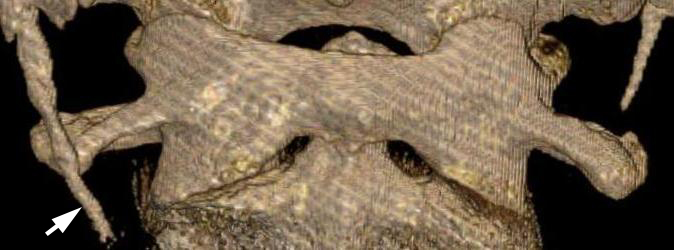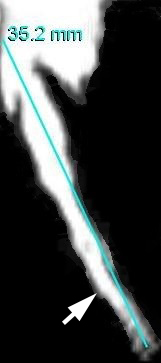January 31, 2020
https://doi.org/10.23999/j.dtomp.2020.1.3
J Diagn Treat Oral Maxillofac Pathol 2019;4:21.
Under a Creative Commons license
HOW TO CITE THIS ARTICLE
Fedorenko PA, Shamova TO. Eagle syndrome: symptomatic elongated styloid process. J Diagn Treat Oral Maxillofac Pathol 2020;4(1):21.
Article
A 60-year-old woman presented to the dental clinic with next complaints during last years: presence of a firm lesion in the projection of the right lateral wall of the oropharynx, periodic discomfort in this area upon eating, and a feeling of tingling. Palpation revealed a non-movable small lesion touching like a bone structure. Three-dimensional computed tomography (Panel A) at the level of cervical spine revealed an abnormal length of a right styloid process (arrow). Its length was 35.2 mm (Panel B, arrow) and the left styloid process reached only 15.6 mm (Panel C, arrow). The variety of treatment strategies were proposed for “abnormally elongated styloid process” (synonym: Eagle syndrome) cases from first cases published by Dr. Eagle and during last 80 years. But our patient rejected the proposed treatment options (including surgery offered at the hospital) due to lack of serious complaints and after realizing that her case is not a tumor-case. In cases when abnormally elongated styloid process combines with a styloid ligament ossification some authors terms condition as a “stylohyoid syndrome.” The variety of symptoms upon Eagle/stylohyoid syndromes gave a right to subdivide them into classical and carotid subtypes. ■ DTJournal.org





